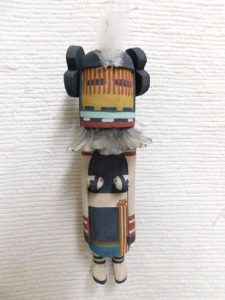As the temperature rises every May, the Hopi tribe celebrates Hakitonmuya, a season that includes plaza dances. These gatherings are among the highlights of the year.
The Hopi tribe lives in 12 villages on three mesas (steep hills with flat tops) spread across more than 1.5 million acres in the northeastern part of Arizona.
The Hopi are dedicated to the spirit , who cares for the Earth. The Hopi lifestyle is harmonious and respectful of the land, and the tribe’s language and culture have flourished for hundreds of years. And, for sure, Hakitonmuya is key to that culture.
What Is Hakitonmuya All About?
Hakitonmuya is the time when the Earth is renewed, and the planting season begins. Only a few types of seeds can be planted in May, however; they include watermelons, squash, and beans. Most other crops will have to wait. Indeed, this occasion is alternatively referred to as “the waiting season”; “haki” means “wait.”
The preparations for this period start well in advance. The Hopi begin getting their fields and gardens ready in April. In fact, except for young children and senior citizens, everyone in each village takes care of certain tasks in order to get ready.
For example, men participate in certain ceremonies. In addition, they hunt, care for livestock, and prepare the crops.
One of the women’s main responsibilities, meanwhile, is to grind the corn that was stored the previous autumn. They crush it into ngymni, a meal that consists of tiny particles. Ngymni is then baked into bread and turned into other foods.
At last, when it’s time for the planting season to get underway, Hopis of every age can participate.
The Role of the Katsinam
Katsinam play a key part in Hopi festivities. Katsinam are teachers and spirit messengers, and they offer prayers, wisdom, and blessings.
In April, as part of the preparations, racer Katsinam visit the plaza. All the males of the tribe are free to compete with them in footraces. When someone takes part in one of those races, that person receives the blessings of good health.
When the first seeds are spread across the ground in May, Katsinam perform a ceremony and do ritual dances on the plazas.
Moreover, different Katsinam have different roles during these events. For instance, the planting Katsina helps with the planting itself. To do so, he brings a hoe and some seeds with him.
Meanwhile, a fertility Katsina, called Kokopelli, will arrive with his own seeds, and he’ll try to bring about rain by playing the flute. That music is said to stimulate the clouds. And a rain dancer Katsina — or a group of them — will dance and sing to coax the rain and promote healthy crop growth.
Other Katsinam represent blooming plants, specific types of corn, or a growing population of animals for hunting.
A Thriving Community, An Unforgettable Occasion
When May is over, it isn’t the end of planting festivities for the year. Instead, this special occasion is followed by Wuko’uyis in June, the month when most of the planting takes place. During this June ceremony, Katsinam in all of the Hopi villages march together to start a day of plaza dances and sunset prayers.
In the end, the planting season is about more than just agriculture. It’s about the entire life cycle: the process of birth, death, and rebirth that affects every living being. These concepts are vital to the Hopi culture, which is why the month of May is anticipated so eagerly and organized so carefully. It’s a powerful, even transcendent, series of events for every member of the tribe.


